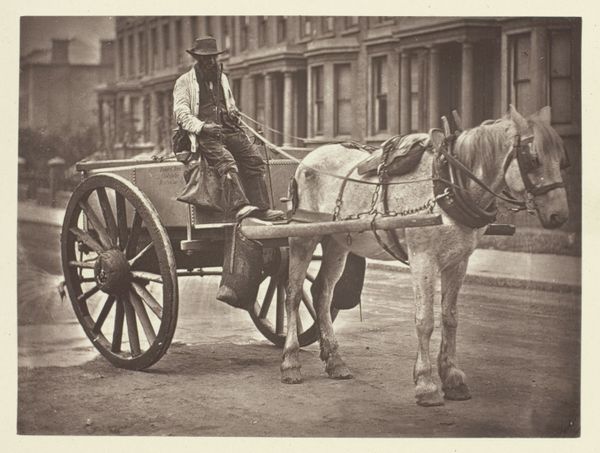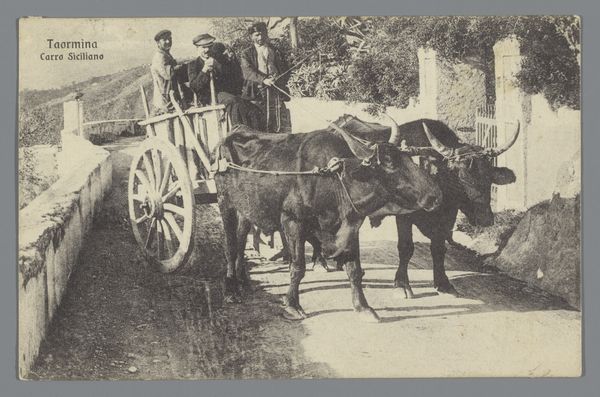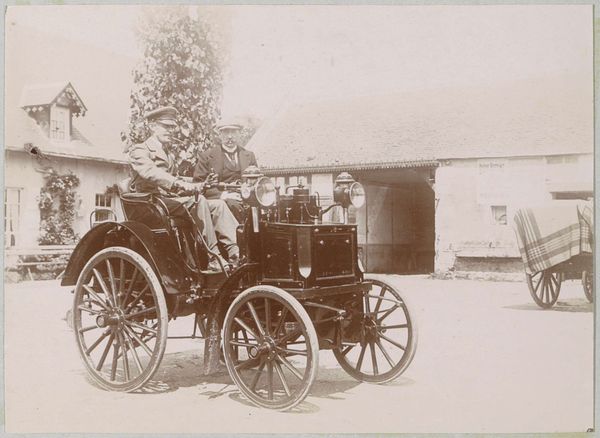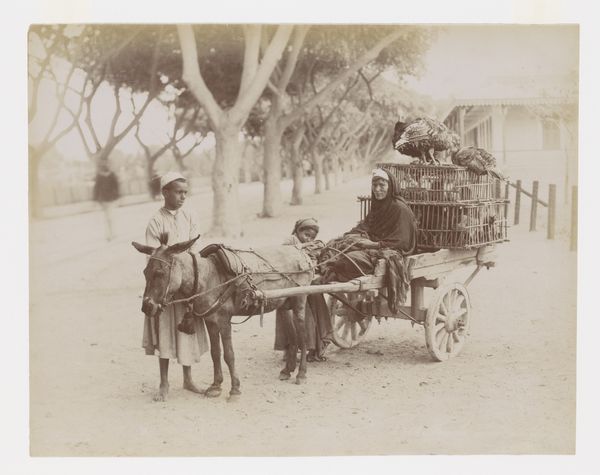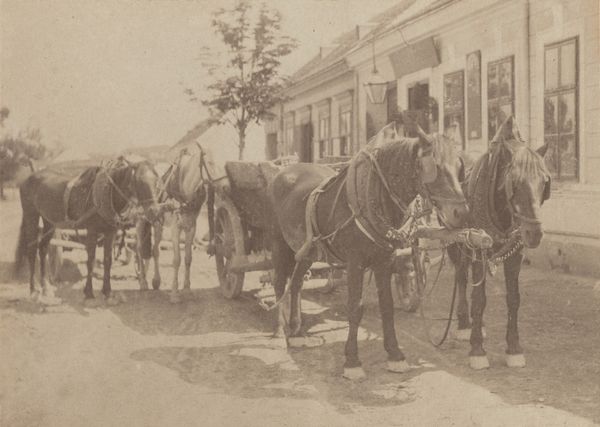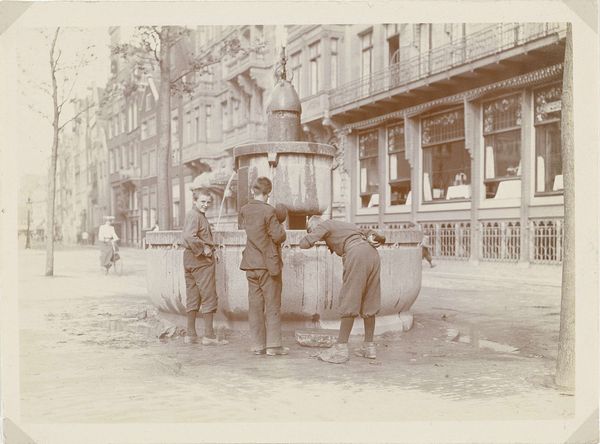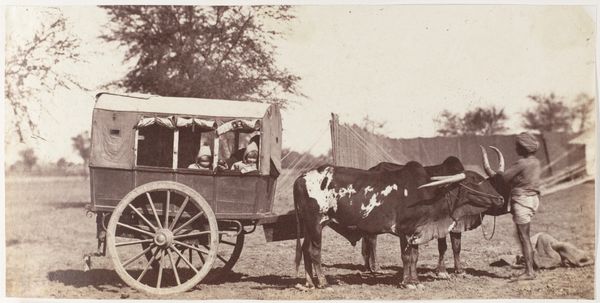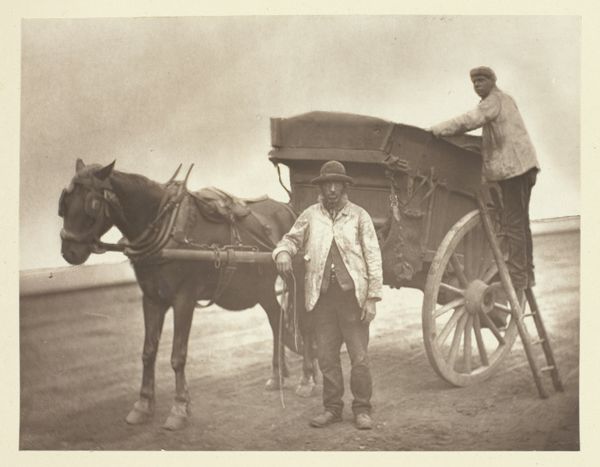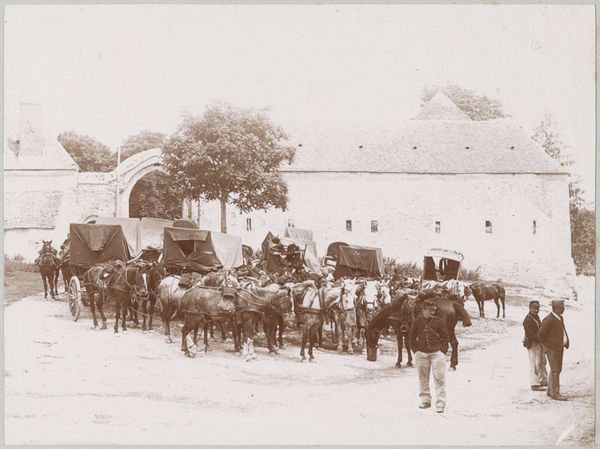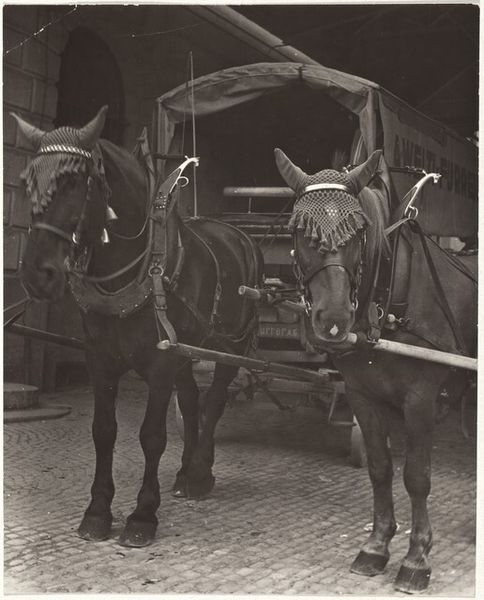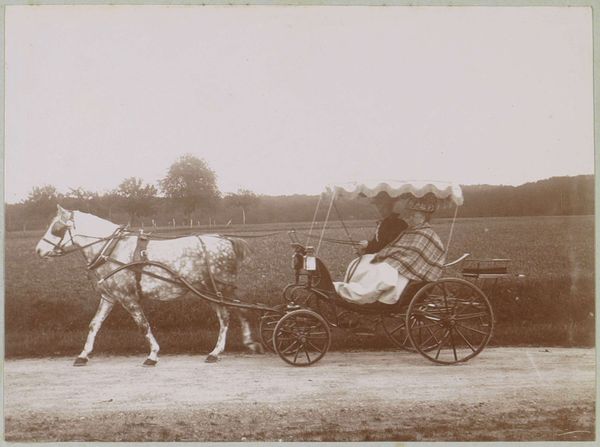
print, photography, albumen-print
#
16_19th-century
# print
#
landscape
#
archive photography
#
street-photography
#
photography
#
historical photography
#
orientalism
#
cityscape
#
albumen-print
#
realism
Copyright: Public Domain
Curator: This albumen print, dating to the 1880s, is titled "Carro con buoi, Perugia" and was created by James Anderson. The scene depicts a cart pulled by oxen in the Italian city. Editor: It has such a stillness to it, doesn't it? A sepia-toned quiet, like a moment lifted from a half-remembered dream. The weight of the cart, loaded down with barrels, and the solid presence of those oxen... you can almost feel the cobblestones underfoot. Curator: It's fascinating how photography at this time began shaping the perception of cities for a broader audience. Think of the influence these images had on tourism and cultural understanding, showing a romanticized, perhaps slightly exoticized, vision of Italy. Editor: Absolutely. And I'm immediately drawn to the craft itself—the labor that went into not just the hauling and the commerce of whatever is inside those barrels, but the actual making of them, the sourcing of the wood. Consider the work in tanning the hides to make the harnesses as well. There is such a celebration of labour happening right in the centre of town. Curator: Indeed. Beyond just documenting a scene, Anderson also presents a carefully constructed view. It emphasizes tradition, a kind of timelessness that was often marketed to travelers eager to experience "authentic" Italy. The photograph flattens some truths to heighten others. Editor: Yet there’s truth in the materiality itself—the wear on those cobblestones, the texture of the oxen’s coats. Even in this image, there’s an inescapable honesty to the physicality of the scene. Also, you can still see some people going by! Life carries on! Curator: Ultimately, photographs like these played a role in shaping historical narratives. They are simultaneously records of the past and interpretations colored by the social and political context in which they were made and received. It shows the city centre and what activities happened around it. Editor: Yes, seeing the photograph through a material lens highlights what went into a single photographic moment, and makes one think of those long-forgotten labors and materials. I find that rather compelling.
Comments
No comments
Be the first to comment and join the conversation on the ultimate creative platform.
